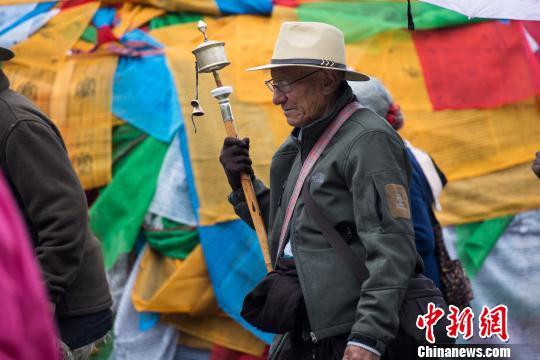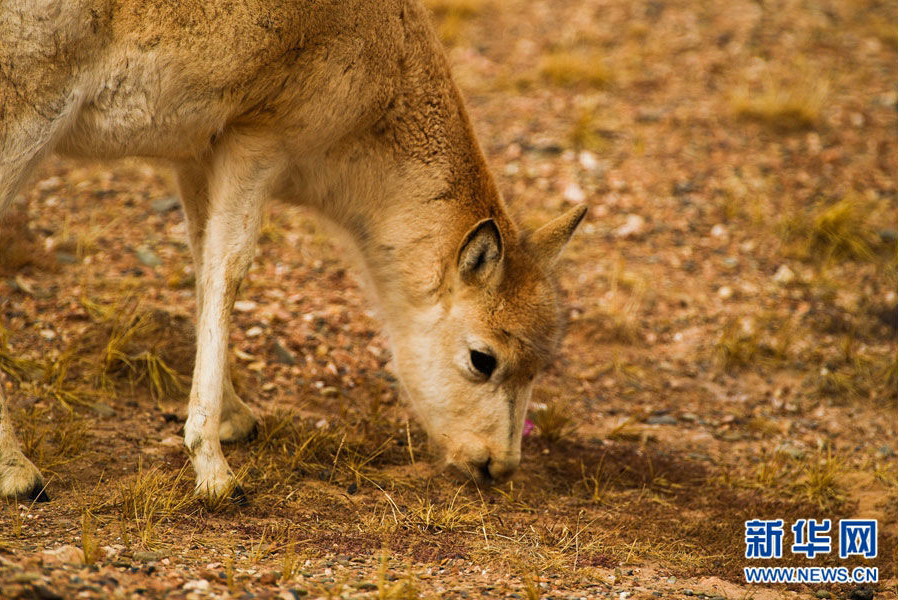Tibetan antelopes begin migration
Rain on the Changthang grassland increases towards the end of May, turning the grass green and ushering in the nicest season of the year for all the wild animals that live off the land here. A series of important activities for the animals take place during this time, such as looking for mates, mating, and breeding offspring.
Tibetan antelopes, which are first-class national protected, are no exception. The antelopes begin their migration each year from the end of April to early June, when Changthang is in its most beautiful time and food is most abundant. Prior to this, they spend nearly a month in gathering together in a large group.
According to an official with the Nyima County Forestry Bureau in Nagqu Prefecture, Tibet, Tibetan antelopes migrate a distance of 10 to 20 kilometers each day. This year, they are expected to reach Nyima County after a short time. The pregnant female antelopes migrating from the south to Nyima County will eventually give birth around the Sewu Snow Mountain.
Data shows that more than 100,000 female Tibetan antelopes arrive here each year.
Tibetan antelopes mate from late October to mid-November and migrate between the end of April and June. They breed between May and mid-June before returning with their young in July. The migration time and resting place is dependent on changes in climate conditions.
In order to protect these plateau animals, forest security groups in Tibet usually organize escorts each migration season.
However, not all Tibetan antelopes join in the migration.
At the end of April each year, male and female antelopes start to separate into groups; even male antelopes less than a year old separate from their mothers. By May and June, female antelopes and their female offspring begin their migration to the breeding place to give birth. After giving birth in June and July, the females will lead the young antelopes back to where they spend the winter and reunite with the males, which signifies the completion of the migration process.
Therefore, the male antelopes are not involved in the migration; only adult female antelopes and their female offspring migrate.
Apart from the male Tibetan antelopes, there are also some groups that are not involved in the migration: the antelopes in Xainza County. "Around 20-30,000 Tibetan antelopes in eastern and southern Xainza County do not migrate, about 95 percent of the total population in the County ," an official with the Xainza County Forestry Bureau said. "They usually stay up on the mountain, and come down to the vast and lush grassy areas in breeding period. Only a small group will migrate to Shuanghu County nearby."
Your Comment
Name E-mailRelated News
-
;
-
-

-
Tibet celebrates Saga Dawa Festival
May 26 was the first day of the fourth Tibetan month and also the first day of the traditional religious festival Saga Dawa, which is celebrated to commemorate the birth, enlightenment and parinirvana of the Buddha.
-
-
-

-
Tibetans' holy month of Saga Dawa in full swing
The Tibetan holy month of Saga Dawa, which has been going on for over two weeks, is in full swing.
-
-
-

-
Tibetan antelope in Hoh Xil
Known as “Kingdom of Wildlife” , the Hoh Xil National Nature Reserve boasts many rare wild animals and plants such as Tibetan antelope, wild yak, Kiang and Tibetan gazelle.
-
Based in Lhasa, Tibet Vista is a Tibet travel agency that specialized in Tibet permit, and Tibet tours for both private and group travelers at a local price!
•4 Days Lhasa City Group Tour from USD 460 •8 Days Everest Base Camp Group Tour from USD 850 •15 Days Mt.Kailash Group Tour from USD 1780 •2016 Tibet Train Tours from Beijing, Shanghai, Chengdu, Xining,etc










